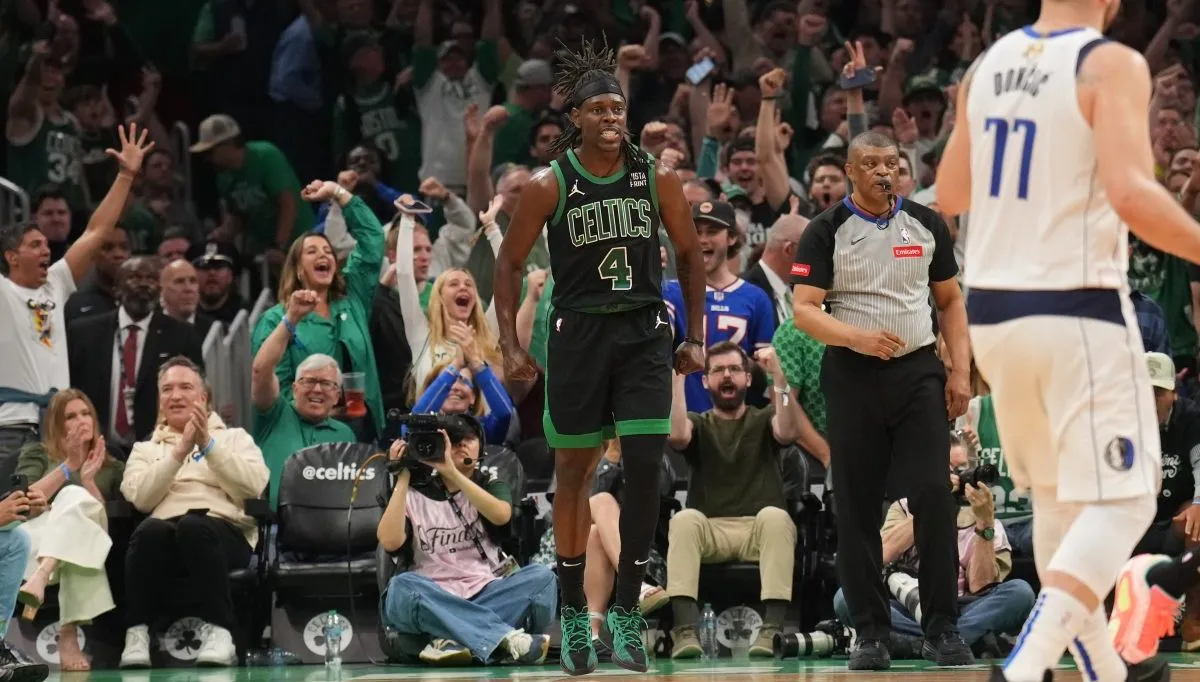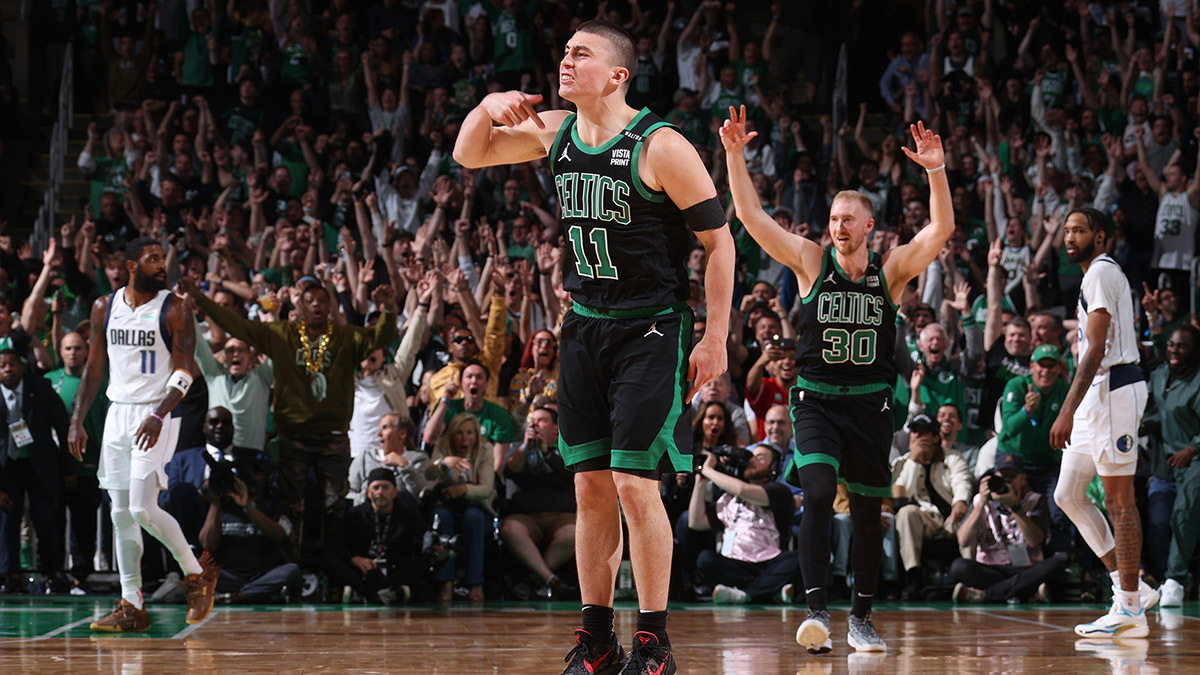Now that you know everything there is to know about the exciting world of traded player exceptions (TPE) after reading this, it’s time to lay out a handful of realistic scenarios detailing how the Celtics could utilize the largest TPE in NBA history.
The Celtics have a bunch of different options to maximize their return after delivering Gordon Hayward to Charlotte.
And they have motivation, if for no other reason that some can stop whining about not taking an Indiana deal even if Danny Ainge clearly determined that Tristan Thompson, Jeff Teague and a hefty TPE were far more valuable than Myles Turner and whatever else the Pacers may or may not have been willing to send.
Stay in the game with the latest updates on your beloved Boston sports teams! Sign up here for our All Access Daily newsletter.
SCENARIO 1: WALLET BUSTERS
The TPE is equal to Hayward’s first-year salary in Charlotte, which is expected to be about $28.5 million, plus $100,000. This theoretically makes anyone with a salary of $28.6 million and under an option, though you can stop daydreaming about guys like Giannis Antetokounmpo ($27.5 million) and Jamal Murray ($27.3 million). And you're not getting Rudy Gobert ($25.7 million) without sending the sort of contracts that would negate the need to use a TPE in the first place.
You’re left with the likes of Otto Porter ($28.5 million), DeMar DeRozan ($27.7 million), Nikola Vucevic ($26 million), Buddy Hield ($24.9 million), LaMarcus Aldridge ($24 million), Draymond Green ($22.2 million), and Harrison Barnes ($22.2 million) as some of the more noteworthy options at north of $20 million per season.
There’s two problems with any of these options. First, the Celtics will be hard-capped this season after using the full value of the nontaxpayer’s midlevel exception to sign Thompson. The team cannot exceed the tax apron of $138 million and Boston will have motivation to stay completely below the tax line of $132 million to ease repeater penalties in future seasons (when Jayson Tatum’s max extension kicks in).
Boston Celtics
Celtics Talk Podcast: Breaking out the Kemba Walker panic meter; the truth about why Gordon Hayward left | Listen & subscribe | Watch on YouTube
Once all of Boston’s other signings are finalized, the team will have roughly $16-22 million to spend before reaching those thresholds, meaning that virtually none of the players above would be in play without sending out additional salary.
Of the high-money players, Barnes is the most intriguing to us. He’s on a descending deal and has three seasons remaining, which lines up his expiration with the end of Kemba Walker’s deal. Barnes is still only 28, shot 38.9 percent beyond the 3-point arc the past two seasons, and has championship experience with Golden State.
The Kings, unlikely to be in the playoff picture, could be motivated to move him to shed a bulky contract and add young talent or draft picks around a core of De’Aaron Fox and Hield. Alas, the Celtics would be in danger of lingering in the tax by adding someone near Barnes’ salary level.
SCENARIO 2: THE PRICE IS RIGHT?
There’s a whole bunch of players in the $14-$19 million range that could be even more intriguing than most of the high-priced options and are far easier to fold into the roster this season.
Some of top names in this bunch: Gary Harris ($19.2 million), Aaron Gordon ($18.1 million), Clint Capela ($18 million), Evan Fournier ($17.2 million), Eric Gordon ($16.9 million), Rudy Gay ($14.5 million), Dejounte Murray ($14.3 million), Will Barton ($13.7 million).
C's reveal new uniform numbers for Thompson & Teague
The Magic, unless they really yearn to be bounced from the Eastern Conference play-in tournament, should strongly consider a reboot. Gordon is maybe the most intriguing option among all the various scenarios we’ll lay out here. He’s 25, on at a modest contract, and has untapped potential with versatility to thrive in Boston’s different lineups.
He’s under contract for more than one season and is eminently movable if the team doesn’t envision a long-term future. Coming off a relatively quiet 2019-20 season, his price tag might not be quite as jarring as it once was and the Magic should yearn for draft assets or low-cost young players in return. Alas, there’s a case to be made that Gordon fits that bill and the Magic would only consider a move if both sides simply need a change of scenery.
Gay is intriguing but, at age 34 and coming off a poor shooting season, it’s fair to wonder what’s left in the tank. He’s an unrestricted free agent after the season and has limited value beyond a reinforcement (though one with versatility that could fit nicely).
You call Denver because they’ve got some tough decisions to make moving forward with Nikola Jokic and Jamal Murray now combining for $60+ million per season. The Hawks have too many centers but Capela probably falls into that “Celtics-didn’t-want-to-pay-Turner-$18-million” scenario. The Spurs probably wouldn’t want to move Dejounte Murray but, again, you gotta at least ask.
SCENARIO 3: BARGAIN HUNTING
While the size of the Hayward TPE will make Celtics fans yearn for the biggest splash possible, Boston could maximize the exception by splitting it into smaller chunks. That might allow them to add a talent on the fly this year, and still be in the market for impact talent next summer.
Some options: Thad Young ($13.6 million), Terrence Ross ($13.5 million), JJ Redick ($13 million), Justise Winslow ($13 million), Larry Nance ($11.7 million), George Hill ($9.6 million), P.J. Tucker ($8 million).
The Celtics brought in Jeff Teague for the backup point guard role but could potentially use another ball-handler. Walker is going to be limited at best at the start of the year and could miss time out of the gates if the Celtics keep him on an original ramp-up plan that had been designed with a January start date in mind. Hill, now in Oklahoma City and on an expiring deal, could seemingly be had for a modest return (say, maybe the future second-round picks acquired in the draft-night deal with Memphis?)
Forsberg: Did the C's actually improve this offseason?
Ross is a veteran shooter with playoff experience. He’s routinely torched the Celtics in recent years. He’s under contract at a descending rate for three seasons. Taking on someone like Ross would still leave the Celtics with roughly $15 million left to ponder other moves before the TPE expired.
Redick would give this year’s team a veteran shooter but he’ll turn 37 before the end of the 2020-21 season and there’s limited long-term value. Like Gay, he’s a 2021 playoff reinforcement if the team has a glaring need out of the gates.
It feels like Winslow is destined to end up in Boston at some point before his career is over, and he’d come a lot cheaper now than four first-round picks. Nance could add some versatility to the big-man spot and has three years on his deal at a descending salary. There’s value in having assets with tradable salaries if you can’t hit a home run with the TPE.
SCENARIO 4: PUTTING A PURCHASE ON LAYAWAY
One of the benefits of not acquiring a trade exception until deep into free agency is that Boston becomes players in the 2021 free-agent market. Sort of. It’s almost the reverse of the Hayward situation.
NBA Power Rankings: Where C's stand entering 2020-21 season
Let’s say there’s a big-ticket free agent that wants a bulky new deal — up to $28.5 million — and essentially signals he wants to go to Boston. The Celtics can’t sign him outright because they’re over the cap, but can offer the team that stands to lose that player draft picks, young talent, and their own TPE to facilitate a deal.
That’s a risky path because, if no deal materializes, Boston runs the risk of the exception vaporizing during free agency. But it’s an option.
SCENARIO 5: BAD CONTRACTS, GOOD DRAFT PICKS
If all else fails, there are always teams looking to unload cap space. And with teams likely trying to clear space for the potential 2021 offseason free-agency bonanza, the Celtics would be in position to absorb bad contracts in exchange for replenishing their future draft-pick stash.


